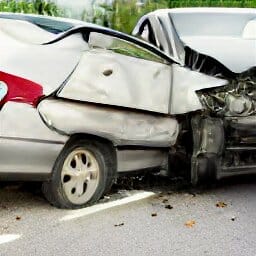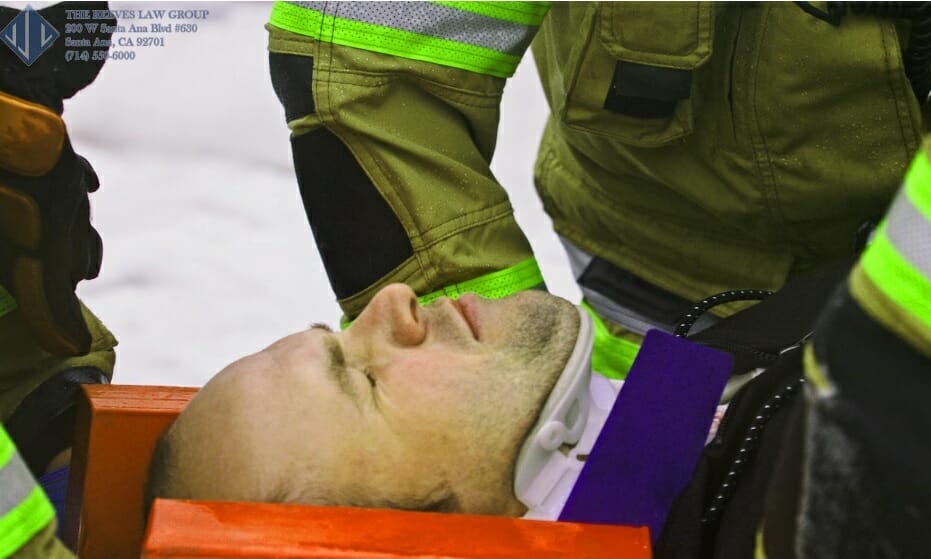
Dealing with the fallout from a car accident can add to the stress of being involved in an accident. You can be dealing with more than you anticipated after a car accident, from injuries to property damage and medical costs to lost pay.
Fortunately, many car accidents are preventable. Some factors contribute to auto accidents more frequently than others. We’ve covered the main reasons for auto accidents below.
Did you know: According to data estimates, there were 1.33 fatalities per 100 million vehicle miles traveled in 2021 compared to 1.34 in 2020 in terms of causes of car accidents.
Car Accidents Statistics
According to the Department of Transportation’s National Highway Traffic Safety Administration, 42,915 individuals will die in motor vehicle traffic accidents in 2021, up from 38,824 in 2020. This represents a 10.5% increase. Is post-COVID lockdown freedom and lack of inhibition contributing to this? Perhaps it’s something else?
These unfortunate fatalities include cyclists, pedestrians, and auto collision victims. Here are some more pertinent stats on car accidents in the US:
- Car-related accidents in California on the road in 2021 increased by 10.7% 2020.
- According to the National Highway Traffic Safety Administration (NHTSA), frontal airbags prevented 2,790 fatalities among passengers aged 13 and older.
- Deaths in accidents caused by speeding are up 5%.
- Through December 25, 2021, 1,465 Los Angeles car accidents resulted in serious injuries.
- Pre-pandemic rates of car collisions with bikers increased once more in 2021, rising by 24% through December 25.
What To Know About Auto Accident Injuries And Its Causes

In California, recklessness or negligence on the part of motorists most frequently results in auto accidents. However, outside variables like poor road conditions or weather can also contribute to motor vehicle incidents even though we don’t typically have the type of bad weather that other states regularly experience.
Let’s take a closer look at some of the most frequent reasons why people get hurt or killed in car accidents in California:
1. Speeding On California Roads
Californian’s love to speed, and break the law quite a bit. We even have the term “California Stop” which alludes to not stopping completely at stop signs.
Speeding is more serious though than rolling through a stop. Due to shorter reaction times caused by speeding, collisions and fatal car accidents are more likely. Speed-related collisions are also more likely to result in catastrophic injuries since so much energy is released.
Speeding related: driver fatigue and missing traffic signs for example can lead to road rage, and causing drivers to end up in a serious accidents causing injuries and damage to other vehicles. In addition, Friday evenings from 3 p.m. to midnight saw a disproportionately high rate of fatal and serious injuries (8.6 percent).
2. Driving Under The Influence In Liberal California
California is quite liberal with allowing personal medication, both recreational and medicinal. It’s against the law to drive while under the influence of marijuana for example, but many drivers don’t take this into consideration or drive when they think the drug is clear of their blood even if it isn’t.
Certain prescription drugs, such as benzodiazepines and opioids, are also common and can make users drowsy, lightheaded, and cognitively impaired (thinking and judgment). Automobile accidents may result from any of these effects of course.
Drivers who were found to have caused the crashes were more likely than those who were not at fault to test positive for prescription opioids (918 versus 549) and drunk driving due to alcohol consumption (5,258 versus 1,815).
Drunk driving is also becoming one of the leading causes of car accidents not just in California but in the US as a whole. Especially in a post-COVID world. In all California jurisdictions, drunk driving is against the law, although alcohol’s debilitating effects start far earlier. For instance, eye problems can begin with BAC levels as low as .02 even though the legal limit is .08.
3. Adderall And Reckless Driving
According to the CDC, users of Adderall may experience a decreased (that’s not a typo) reaction time due to side effects such as tiredness and vertigo after sustained use. Young drivers who frequently abuse this drug may end up with erratic reflexes, paying less attention to the road, or using bad judgment when driving, comparable to general distracted driving.
According to state legislation, drugs that impair a driver’s awareness are just as risky as alcohol. While Adderall is one of the legal prescription drugs that might result in a DUI (usually only if used illegally), it is not the only one. This is pretty frequent in Orange County and throughout California, leading to several documented laws.
4. Road Rage And Reckless Driving
Many aggressive drivers have made the grievous error of causing a collision for no reason, and the worst is those that were fatal for other drivers. Speeding is one of the most frequent factors in crashes of this nature. Drivers frequently swerve past other vehicles when they become agitated, aggressive, and anxious to beat the traffic.
Road rage commonly leads to racing and ignoring speed limits, speeding to beat red lights, neglecting to surrender the right-of-way, and lane changing without signaling. Every year, incidents involving violent behavior and aggressive driving on the road result in accidents and fatalities.
Unfortunately, some incidents of road rage actually result in shootings between drivers. Over 700 road rage shootings were reported in 2021, accounting for two-thirds of all incidences of distracted driving and road rage.
5. Sleep Deprivation
Public health is at risk from drivers getting insufficient sleep. Sleep is essential for immunological, hormonal, metabolic, and other bodily processes and brain and body functions such as cognition and emotion. Insufficient sleep is linked to drowsy driving habits, lower productivity, lower quality of life, a higher chance of workplace accidents, industrial accidents, and medical mistakes.
According to the National Highway Traffic Safety Administration, sleepy driving causes 91,000 police-reported crashes annually, resulting in about 50,000 injuries and almost 700 fatalities.
6. Slippery Roads
Rainfall in California typically occurs exclusively from October to March (if at all). Due to this, some drivers lack the necessary driving expertise to navigate slick and rainy roads safely. It is therefore not unexpected to hear that hundreds of car accidents during the rainy season result crashes and personal injury cases in California
Slippery surfaces make it challenging for drivers to maintain normal control of their cars, increasing the likelihood that they may be involved in an accident. However, additional contributing elements may increase the likelihood of a car collision, such as a fresh rain (road is still slick with oil and grime etc.)
7. Poor Lighting On California Suburban And Rural Roads
Driving at night in poor weather conditions, or running up on unexpected animal crossings are important driving safety concerns in rural areas. Older drivers for example, who struggle to drive at night, on dimly lit roads, or in unfamiliar environments can benefit from vision improvement systems, such as Night-Vision Enhancement Systems, which also increase the visibility of roadside items and animals.
In rural areas, it’s argued that street lighting adversely affects road safety, as drivers may feel safer because lighting gives them improved visibility, however livestock, wild animals and tractors or other vehicles are still on the road. Also, although our eyes can adapt to lower light levels (pupils enlarge in darkness and contract in brightness), they struggle to adjust from bright to dark or vice versa. When you are on a brightly lit road it may be harder to see when you suddenly get to a street that’s unlit.
8. Improper Vehicle Maintenance
Automobiles require routine maintenance to operate correctly, just like any other machinery. Regular maintenance helps keep drivers, passengers, and other road users safe, in addition to extending the vehicle’s life.
Car accidents and auto accident injuries can result from failing to keep a vehicle functioning properly. Vehicle owners who neglect routine maintenance and repairs may be responsible for accidents in a personal injury claim.
In various ways, poorly maintained vehicles can cause accidents, such as these examples:
- Burnt-out turn signals or headlights
- Faulty breaks
- Worn-out, broken-down, or incorrectly inflated tires
- Windshield wiper blades that are old
9. Aftermarket Car Parts In Tuner-friendly California
Performance parts for on-highway cars have the potential to result in car accidents or seriously harm other drivers, as they were not designed for use on public roads. These may include oversized tires, fenders, sharp metal attachments or other items. California Air Resource Board (CARB) normally forbids businesses from advertising, distributing, selling, installing, or utilizing aftermarket parts that modify the emissions system of a vehicle, though many drivers ignore this and remove these parts only to pass Smog inspections every 2 years, then put them right back.
Automobiles with faulty aftermarket components can be unsafe and result in serious accidents that harm pedestrians, other drivers, and passengers. While personal injury lawsuits from such accidents are rare, they are not unheard of. Aftermarket modifications on a work vehicle or a transport-category vehicle such a limousine are where these cases most frequently occur.
10. Protests And Demonstrations
Controversial demonstrations on racial and political issues have increased dramatically in the US since 2020. Some occurrences involving vehicles and accidents seem to be targeted and politically motivated; in other cases, car accidents occur due to angry or scared drivers who had their vehicles encircled during protests.
There is a wide range of documented car-ramming occurrences. According to Ari Weil, a researcher at the University of Chicago, “more than 50 people have driven vehicles into nonviolent protestors,” according to an article in the New York Times from October 9, 2020. These may open a driver up to a serious civil suit, in addition to a criminal trial.
11. Jaywalking In Busy California Cities
Jaywalking is a dangerous practice that the California Vehicle Code prohibits, and violators are subject to a citation that costs about $200. Only when a pedestrian is crossing at a crosswalk or on the road deemed a sidewalk is it permitted to do so.
When you jaywalk, you risk being struck by an approaching vehicle. The driver might not stop in time to avoid hitting you if they are not paying attention.
12. Two Cars Passing Each Other
According to one of the many traffic laws, a driver who wants to cross into the proper lane must make sure they can do it safely.
When attempting to make unsafe lane changes, a driver may be held responsible for the collision if their carelessness contributed to it.
Driving while distracted, driving too fast, and driving while intoxicated are the three most frequent reasons for merging accidents.
13. Farm Animals On Rural California Roads
The injuries from a collision with a large, heavy animal, like a cow or horse, can be severe and disastrous for the driver and the other passengers in the vehicle. These collisions can cause the death of the passengers in the car.
According to a State Farm Insurance survey, between July 2020 and June 2021, drivers hit an estimated 2.1 million animals on American roads, an increase of 7.2% over the previous 12 months. Speed “may potentially be a factor underlying the astonishing animal collision figures and their recent increase,” State Farm says.
14. Wild Animals On California’s Backroads
According to an annual assessment by the Road Ecology Center at UC Davis, collisions between humans and wildlife have cost California up to $2 billion.
Wild animals like deer have the potential to destroy cars and shatter the windshield when struck quickly, seriously injuring both the driver and passengers. Additionally, accidents involving animals claim the lives of roughly five people yearly in California.
15. Narrow Roads
The notorious roads of Route 199 in California are dangerously narrow and winding, giving most drivers disorienting sights, sometimes missing street signs warning them to slow down or swerve accordingly.
Sadly, its congested, winding lanes and disorienting vistas are one of the leading causes of numerous collisions every year, some of which include drivers who go off the road and crash into trees.
16. Road Construction
Due to a designated speed limit that is in place in California’s construction zones, traffic congestion and slowdowns frequently occur when cars are around work sites. Accidents can be caused by abrupt slowdowns, especially on highways where vehicles frequently accelerate at high rates of speed.
A driver caught off guard may rear-end another car or cause several cars to rear-end one other, leading to a multi-vehicle catastrophe when a work site suddenly slows down traffic.
17. Race And Ancestry
Numerous studies have looked at the characteristics of traffic crashes and how frequently BIPOCs are disproportionately represented in them. Of all races and ethnicities, American Indian/Alaskan Native populations had the highest yearly, age-adjusted pedestrian death rates (7.73 for men and 2.22 for women).
In those age categories, American Indian/Alaskan Native women’s death rates from fatal car accidents varied from 2.29 to 4.17, whereas Black women’s rates were 0.96-1.88 (interquartile range: 0.96-1.88). In children, traffic fatalities were highest in American Indian/Alaska Natives aged 1 to 9 and 10 to 19.
Accident Diagrams: Graphs And Charts Explaining Car Accidents
Similar accident patterns can be identified using collision diagrams. They offer details on the kinds and numbers of incidents, as well as the time of day, day of the week, weather, the State of the pavement, and other details that are important for identifying the root causes of safety issues.
For the analysis period, accident reports should be arranged by accident type and year of occurrence. Significant changes to local or highway land use should not count as accidents.
Accident patterns visible on the crash diagram frequently point to potential accident issues. An abundance of angle accidents, for instance, would suggest the possibility of a viewing distance restriction. The accident’s severity, the type of operation, and the vehicle or object involved are all represented by symbols. Standardized symbols are also used to indicate different collision diagram kinds.
The longer you wait to file a claim after a car accident, the less likely you are to receive proper help. Contact Reeves Law Group immediately for a free case evaluation with a car accident lawyer by calling (800) 644-8000 or completing our online contact form.
Sources:
- https://www.nhtsa.gov/press-releases/early-estimate-2021-traffic-fatalities#:~:text=Data%20estimates%20show%20the%20fatality,of%202021%2C%20compared%20to%202020.
- https://www.cnbc.com/2022/05/17/us-traffic-deaths-hit-16-year-high-in-2021-dot-says.html#:~:text=The%20National%20Highway%20Traffic%20Safety,have%20died%20during%20a%20crash
- https://crashstats.nhtsa.dot.gov/Api/Public/ViewPublication/813283
- https://englishtimes.uk/hundreds-of-people-died-in-traffic-accidents-in-la-in-2021-is-vision-zero-a-failure
- https://www.iii.org/fact-statistic/facts-statistics-highway-safety
- https://www.ots.ca.gov/wp-content/uploads/sites/67/2019/06/2018-Speeding-Related-Collisions-Facts.pdf
- https://nida.nih.gov/publications/drugfacts/drugged-driving#:~:text=Certain%20kinds%20of%20prescription%20medicines,can%20lead%20to%20vehicle%20crashes.
- https://www.nbcnews.com/health/health-news/prescription-opioids-may-play-role-some-fatal-two-car-crashes-n973736
- https://www.thezebra.com/resources/research/road-rage-statistics/
- https://www.ots.ca.gov/media-and-research/campaigns/drowsy-driving/
- https://www.ots.ca.gov/media-and-research/campaigns/drowsy-driving/
- https://www.americashealthrankings.org/explore/annual/measure/sleep/state/CA
- https://transweb.sjsu.edu/sites/default/files/SP1020-Metal-Against-Marchers.pdf
- https://www.repairerdrivennews.com/2022/05/17/collisions-with-animals-rose-7-2-during-the-pandemic-state-farm-analysis-says/
- https://www.bloomberg.com/news/articles/2017-09-27/wildlife-collisions-surge-in-california-what-s-the-fix
- https://pubmed.ncbi.nlm.nih.gov/12643947/
- https://www.ghsa.org/sites/default/files/2021-06/An%20Analysis%20of%20Traffic%20Fatalities%20by%20Race%20and%20Ethnicity.pdf










